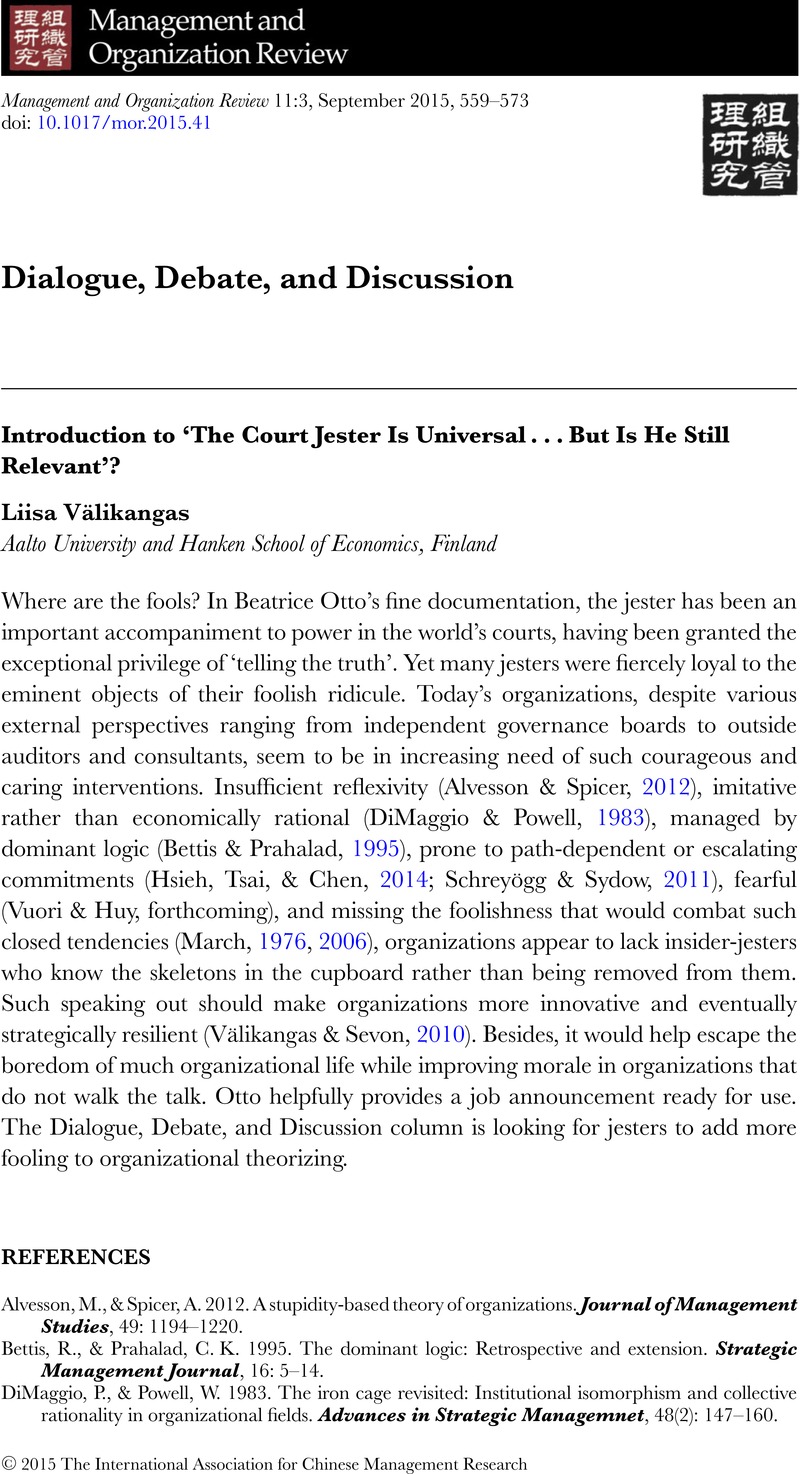Crossref Citations
This article has been cited by the following publications. This list is generated based on data provided by Crossref.
Clegg, Stewart
Cunha, Miguel Pina e
Rego, Arménio
and
Berti, Marco
2022.
Speaking truth to power: The academic as jester stimulating management learning.
Management Learning,
Vol. 53,
Issue. 3,
p.
547.
Sender, Anna
and
Mormann, Hannah
2024.
It Takes a Fool to Remain Sane: How and When HR Executives Use Jesting Techniques to Trickle Up Paradoxical Tensions.
Journal of Management Inquiry,



